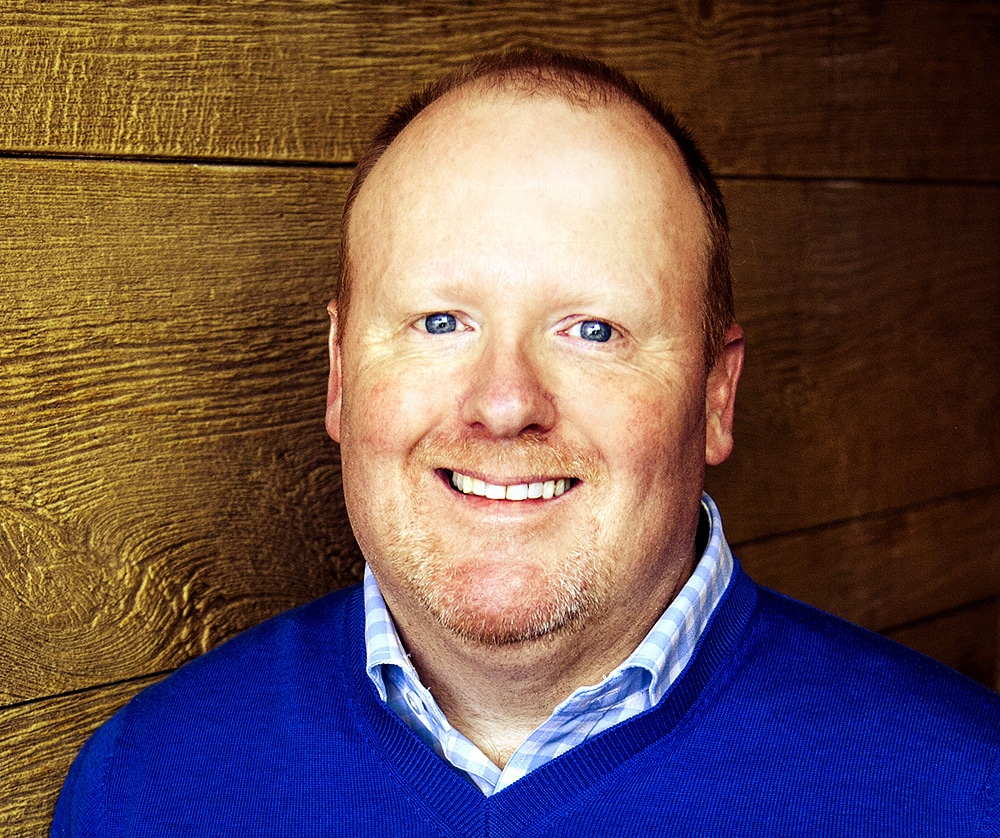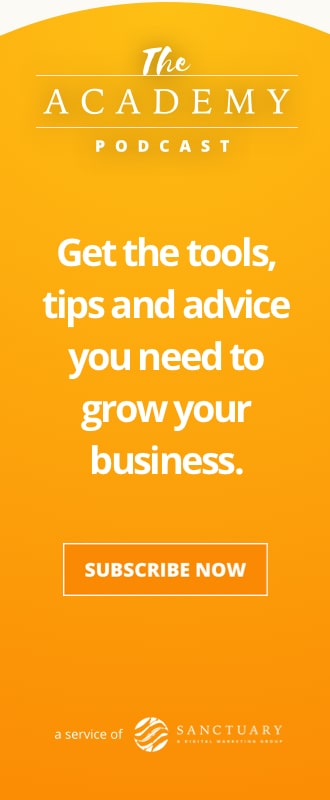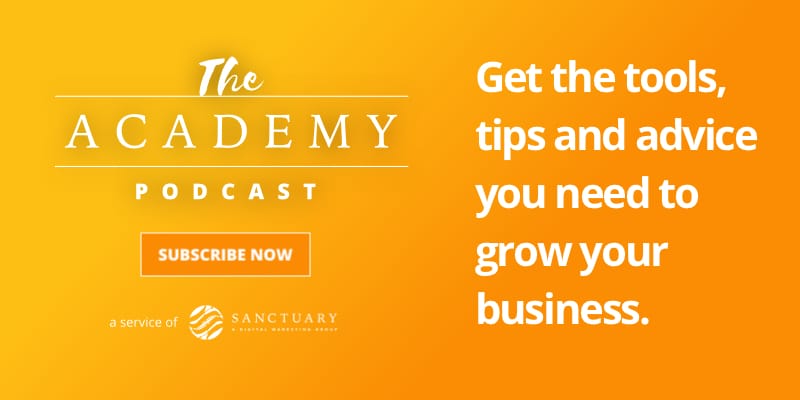
If you’re anything like me, your calendar is a maze of deadlines, meetings, and back‑to‑back Q3 objectives—tasks that matter, but too often keep you lost in the weeds. The last thing you feel like doing is stepping away from it all. And yet, for over a decade—usually right at the start of Q3—I’ve given myself the gift of a one‑week clarity break. No slideshows. No fishing for “aha” moments. Just focused, uninterrupted time to read, explore, prototype, and rethink.
In EOS, it’s called a “Clarity Break.” Bill Gates famously labeled his version “Think Week.” For me, this isn’t a vacation—it’s a disciplined ritual: a chance to step out of execution mode and back into strategic leadership. Here’s everything I do, why I do it, and how I’ve fine‑tuned this practice into a catalyst for growth.
What Actually Happens During a Clarity Break
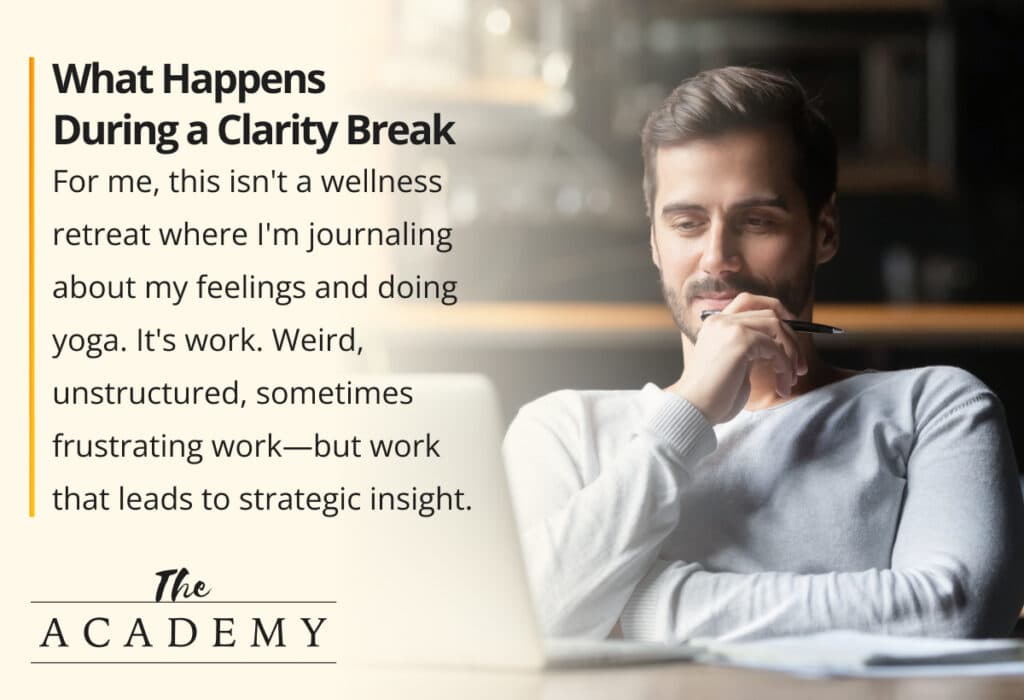
For me, this isn’t a wellness retreat where I’m journaling about my feelings and doing yoga. It’s work. Weird, unstructured, sometimes frustrating work—but work that leads to strategic insight.
Here’s what my typical week might look like:
- I sleep like a human being. No 5 AM alarm. No Slack notifications. I wake up when my brain decides it’s ready to work, which is usually around 7:30. That alone is a reset.
- I attack my “someday” list. All year long, I save articles, tools, books, concepts, and random ideas in a document—somewhere between 60 and 80 items. I scan it every day and let energy and curiosity lead.
- I read ‘deep’ stuff. Think: trend reports, research studies, full books—not the headlines and how-to blogs that flood my daily feed.
- I move. A good run or walk clears mental fog. Ideas click into place mid-stride.
- I build. I’ve built prototypes for tools we now use, including one marketing planning tool that had been stuck in my head for months until I finally had the time to sit down and build it out.
- I test tech. I’ve of course explored tools like ChatGPT Deep Research, Claude, and Google’s NotebookLM to see how they might affect our business and help our clients. But I also used it to challenge my own thinking and learn deeper about the topics I’m exploring.
- I let my mind wander. That sounds loose, but it’s not. I use guided prompts, AI-powered synthesis, and mind-mapping software to explore strategy scenarios and financial forecasting. Sometimes I sit in silence and stare at spreadsheets. That counts.
Typical Daily Schedule
| Time | Activity |
| 7-8 AM | Wake up. Minimal email. Open idea list. Start with what feels most exciting. |
| 8-10 AM | Read: articles, Kindle books, industry reports. Journal if thoughts surface. |
| 10-11 AM | 4–6 mile run. Audible podcasts or music background while processing. |
| 11 AM-12 PM | Use ChatGPT/Claude to research and test theories, or explore NotebookLM clusters. |
| 12-12:30 PM | Light snack. Transition into afternoon deep work. |
| 12:30-4 PM | Focus block: financial forecasting, prototype-building, roadmap sketching. |
| 4-6 PM | Continue deep work or switch mediums—paper sketching, dashboards, mind maps. |
| 6-7 PM | Break. Hotel bar for dinner or order in something simple. |
| 7-10 PM | Review prototypes or play with tools. Keep going if flow state hits. |
| 10-11 PM | Watch a documentary, listen to music, veg out. Sleep when tired. |
What I’m Really After
This isn’t about emerging from a hotel with a PowerPoint deck or a five-year strategy. It’s about:
- Lifting my head. To see where we’ve been, what’s shifted, and where the world is going.
- Spotting patterns. What keeps showing up in our business, with our clients, and in the market that I’ve been too close to see?
- Sharpening strategy. What services or skills should we be investing in? What gaps do we keep hitting?
- Clarifying focus. What really matters going into the next 12–24 months, and what do we need to let go of?
- Building conviction. So I can lead the team into planning season with clarity, confidence, and a deeper point of view.
Learn from my mistakes – Oh, Savannah

Early on, I thought I could be efficient and turn my Think Week into a family getaway. My wife and I both love to travel. She had some books to read and a few shops she wanted to explore. It sounded like a win-win.
So I booked a trip to Savannah. Beautiful place. Comfortable hotel. I promised I’d be deep in thought, but that she’d hardly notice I was gone.
Day one? Great. She relaxed at the pool, I dove into my reading list. But by day two, I was mentally in another universe. I’d been in spreadsheet mode for hours, analyzing marketing trends, building models – and when I came up for air, I couldn’t form a normal sentence. I wasn’t present, wasn’t connected, and definitely wasn’t fun.
She’d ask simple questions like, “Where do you want to eat tonight?” and my brain would stall out. I was still stuck on another planet – or worse – I just wanted to eat Taco Bell in the hotel room and keep playing with my spreadsheets.
It was a bust.
It created unnecessary tension and guilt. She wasn’t doing anything wrong. I wasn’t doing anything wrong. But, I just couldn’t be two people at once. And the truth is: when I’m in Think Week mode, I’m deep in it. I’m not capable of half-engaging. And I’m certainly not fun to be around when I’m trying to prototype a pricing strategy while ordering sushi.
I’m just weird when I’m in my head. Really. Weird.
Now? I don’t mix work and life during clarity week. I don’t try to optimize the trip by dragging family along. This is a solo mission.
The biggest takeaway? Don’t try to hedge it. You won’t get deep enough, and everyone involved will end up frustrated. Clarity breaks only work when you give them the space and the solitude they require.
Coming Back to Earth
When I return, I don’t hit the team with a TED Talk. I don’t need to “present” anything. Instead, I do three things:
- I send a short thank-you email for the space.
- I share one or two things that really stood out to me.
- I offer something I’d like to explore together in planning.
Then, I just let it unfold. Sometimes I come back with a prototype. Sometimes it’s a shift in perspective. Sometimes it’s a question we need to answer.
But every time, I come back clearer, calmer, and more ready to lead.
Scaling the Concept
We’re starting to institutionalize this with our leadership team. Not a full week—yet. But even a two-day clarity break can create space for better thinking.
For people with young kids and full lives, it’s not easy. But when they get a taste of the value—when they come back with stronger ideas and fewer knee-jerk reactions—they start to see it not as time off, but as time invested.
And that’s what it is: strategic R&D time for your brain.
The Domino’s Test
You’ll know you’re doing it right when you lose track of time. It’s 10:30 PM. You’ve got a Domino’s pizza box open next to your laptop. You’re not behind. You’re building something that matters.
That’s when you remember why you became a leader in the first place: not to chase tasks, but to shape vision. Not to manage noise, but to recognize what truly matters.
Start Small, But Start
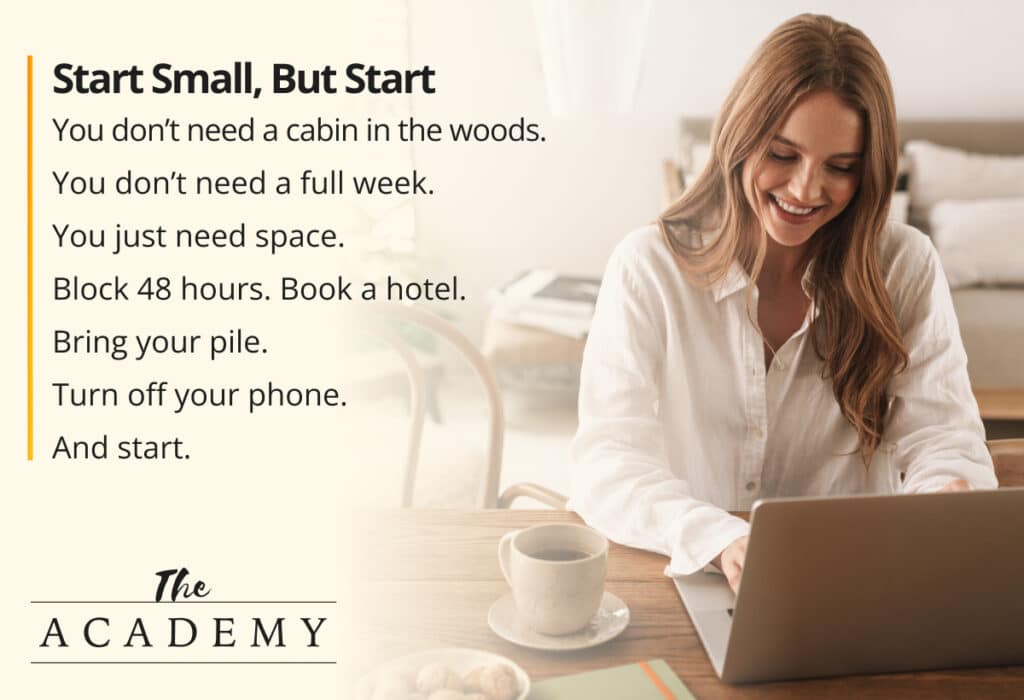
You don’t need a cabin in the woods. You don’t need a full week. You just need space.
Block 48 hours. Book a hotel. Bring your pile. Turn off your phone. And start.
Give yourself the time to think about the business—not just run it. Your team will survive without you. The better question is: can you afford not to do this?
Want to Go Deeper?
If you’re curious how others approach their clarity time, here are a few good reads:
- Why every leader needs to take a ‘Think Week’ – Quartz
- The Power of an Annual Think Week – LinkedIn
- Think Weeks: What They Are and How to Do Them Right – Ashore
- What is a Think Week and What Are the Benefits? – Unplugged
- Think Week, Inspired by Bill Gates – Medium
And if you ever want help structuring your own clarity break—or want to explore your takeaways with someone who’s been there—I’d be glad to chat. (Just let me finish my pizza first.)
Most Popular Articles

Seeing Favicons in Your Google Search Results? Here’s Why…
Have you noticed anything different in your Google Search results lately? Google added tiny favicon icons to its organic search results in January. It was…

Business Growth and Digital Marketing News & Tips 11-17-24
Are you encouraging and rewarding innovation? Lee Cockerell is the former Executive Vice President of Operations at Walt Disney World. A lover of traditional red…

Business Growth and Digital Marketing News & Tips 11-27-24
A culture of gratitude "Feeling gratitude and not expressing it is like wrapping a present and not giving it." – William Arthur Ward Beyond being…
